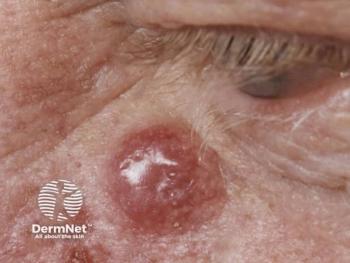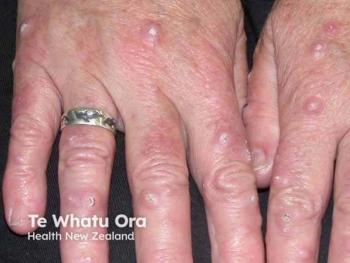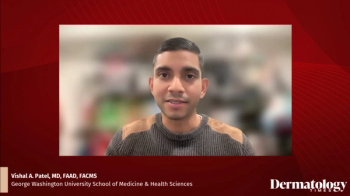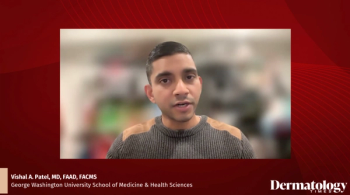
- Dermatology Times, September 2021 (Vol. 42, No. 9)
- Volume 42
- Issue 9
SRT Shows Positive Outcomes for NMSC
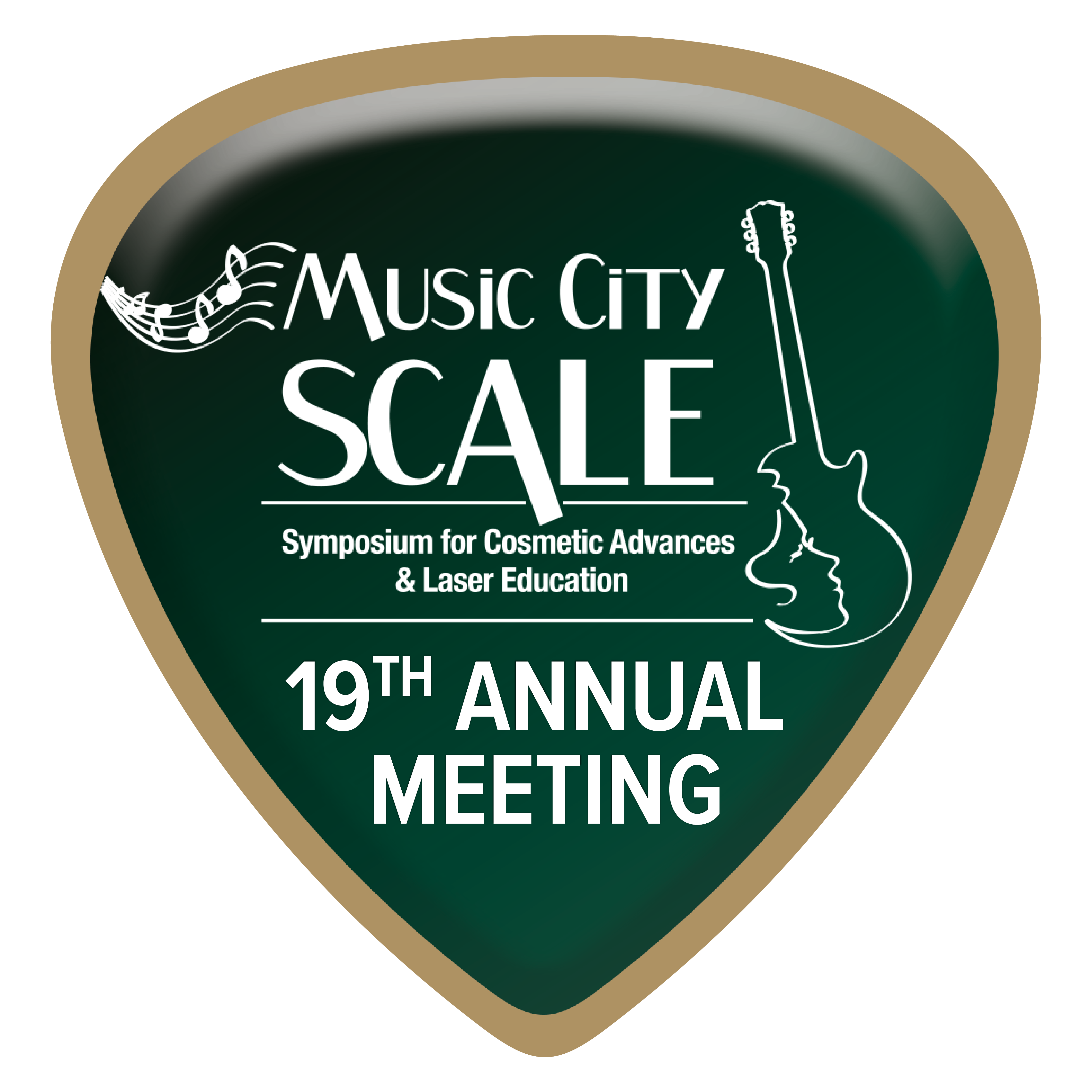
Part 1 of Dermatology Times®’ coverage of a strategic look at superficial radiation therapy (SRT) presented at the recent Music City SCALE Symposium for Cosmetic Advances & Laser Education 16th Annual Meeting in Nashville, Tennessee, showcases this therapy’s efficacy in treating keratinocytic skin cancers.
Superficial radiation therapy (SRT) provides short-term cure rates similar to those in previous SRT research and of surgical options including Mohs surgery, Brian Berman, MD, PhD, professor emeritus of dermatology and cutaneous surgery at the University of Miami Miller School of Medicine and codirector of the Center for Clinical and Cosmetic Research in Aventura, both in Florida, told Dermatology Times® in an exclusive interview.
Using ultrasound-based image guidance may improve nonmelanoma skin cancer (NMSC) outcomes, he added.
Berman presented on SRT for keloid treatment as part of a conference track on dermatology updates for the therapy along with new and emerging medicines to treat skin cancers at the Music City SCALE Symposium for Cosmetic Advances & Laser Education 16th Annual Meeting, August 18-22, 2021, in Nashville, Tennessee.1
Visualizing Skin Cancers
A recent review of 2,917 invasive and in situkeratinocytic carcinomas treated with image guided SRT (IGSRT) showed an overall control rate of 99.3% at patients’ last follow-up.2 Based on these results, authors led by Lio Yu, MD, a radiation oncologist at Laserderm Dermatology in Smithtown in New York, New York, suggested considering IGSRT as a first-line option for keratinocytic tumors in suitable early-stage patients.2
“These results, while observed with approximately 55% of patients having follow-up for 12 months or more, appear at this time to be at least consistent with the results of standard surgical and nonsurgical modalities used to treat NMSC,” wrote the study authors.
Performing 22-MHz ultrasound imaging before SRT (SRT-100 Vision; Sensus Healthcare) facilitates visualizing tumor depth up to 6 mm, said Berman, who is a consultant and investigator with Sensus.
“Once you know the depth of the tumor, you can correlate it with percentage depth dose tables,” Berman said. “Based on the depth of a basal cell carcinoma (BCC) that you’ve now measured relatively precisely with the ultrasound, you can determine what the appropriate dose would be.” This approach is better than estimating the tumor’s depth and lateral borders with the naked eye, he added.
Whereas the study’s 99.3% tumor control rate “at last follow-up” is a rather broad statement in his view, Berman explained the control rates were equally impressive when one considers only tumors with at least 1 year of follow-up (n=1639, also 99.3%), and only invasive BCC and squamous cell carcinoma (n=1242, 99.2%).
In fact, said Berman, the study’s 99% control rate is higher than the 90% to 96% rates reported in most SRT studies,3,4 and on par with results of Mohs surgery.5 “It’s not counterintuitive that if you can visualize the tumor, then you know where to aim the beam and how deep the beam needs to go,” he added. “[And] maybe you’re going to get a higher cure rate than what [has] been in the literature, which has very robust data supporting the effectiveness of SRT on NMSC.”4,6-8
“Having said that, I am not advocating using SRT for all nonmelanoma skin cancers in all patients,” he cautioned. “Surgery is the standard of care for nonmelanoma skin cancers.”
However, he said, SRT is well suited for patients who do not want to or cannot undergo surgery. In his experience practicing in Florida, Berman reported that patients who have undergone previous skin cancer excisions may reject additional scarring surgeries. Additionally, elderly patients with other comorbidities—Berman explained that, generally, relevant comorbidities increase with age—or those on anticoagulants may benefit by avoiding surgery, he noted.
David J. Goldberg, MD, JD, director of Skin Laser & Surgery Specialists; director of cosmetic dermatology and clinical research with the Schweiger Dermatology Group; clinical professor of dermatology and past director of Mohs surgery and laser research at Icahn School of Medicine at Mount Sinai, and adjunct professor of law at Fordham University School of Law, in New York, New York, and Dermatology Times® editorial board member also pointed to positive outcomes for this therapy.
“Having an SRT unit added to my busy Mohs surgery office has greatly added to our ability to treat many more patients with nonmelanoma skin cancer,” he told Dermatology Times®. “Each technique has its benefits. With an increasingly older population of patients who are not good surgical candidates, SRT provides high cure rates for many people. Similarly, for a younger, cosmetically concerned patient base, SRT can lead to elegant cosmetic results with a high cure rate.”
The IGSRT study’s retrospective nature requires interpreting results cautiously, Berman said. However, he added, long-term prospective skin cancer studies are very difficult to perform. The 99% cure rate remains impressive, in his view. “If there’s a recurrence 3 years later, let’s say, in the margin where the port didn’t catch the original tumor, you’re not handcuffed from using surgery at that point.”
Disclosures:
Berman is a consultant and investigator for Sensus. Goldberg reports no relevant financial interests.
References:
1. Berman B. Superficial radiation therapy for keloids. Presented at: Music City SCALE Symposium for Cosmetic Advances and Laser Education 16th Annual Meeting; August 18-22, 2021; Nashville, Tennessee.
2. Yu L, Oh C, Shea CR. The treatment of non-melanoma skin cancer with image-guided superficial radiation therapy: an analysis of 2917 invasive and in situ keratinocytic carcinoma lesions. Oncol Ther. 2021;9(1):153-166. doi:10.1007/s40487-021-00138-4
3. Hernández-Machin B, Borrego L, Gil-García M, Hernández BH. Office-based radiation therapy for cutaneous carcinoma: evaluation of 710 treatments. Int J Dermatol. 2007;46(5):453-459. doi:10.1111/j.1365-4632.2006.03108.x
4. Cognetta AB, Howard BM, Heaton HP, Stoddard ER, Hong HG, Green WH. Superficial x-ray in the treatment of basal and squamous cell carcinomas: a viable option in select patients. J Am Acad Dermatol. 2012;67(6):1235-1241. doi:10.1016/j.jaad.2012.06.001
5. Tolkachjov SN, Brodland DG, Coldiron BM, et al. Understanding Mohs micrographic surgery: a review and practical guide for the nondermatologist. Mayo Clin Proc. 2017;92(8):1261-1271. doi:10.1016/j.mayocp.2017.04.009
6. Rodriguez JM, Deutsch GP. The treatment of periocular basal cell carcinomas by radiotherapy. Br J Ophthalmol. 1992;76(4):195-197. doi:10.1136/bjo.76.4.195
7. Grossi Marconi D, da Costa Resende B, Rauber E, et al. Head and neck non-melanoma skin cancer treated by superficial x-ray therapy: an analysis of 1021 cases. PLoS One. 2016;11(7):e0156544. doi:10.1371/journal.pone.0156544
8. Lawrence WT. In search of the optimal treatment of keloids: report of a series and a review of the literature. Ann Plast Surg. 1991;27(2):164-178. doi:10.1097/00000637-199108000-00012
Articles in this issue
about 4 years ago
Nebulous Nail Issuesabout 4 years ago
Legal Eagle: Website Slanderover 4 years ago
FDA Warns About Some JAK Inhibitorsover 4 years ago
Acne Care for Transgender Patientsover 4 years ago
Coding Office Visits: The 99211 Checklistover 4 years ago
Full Pipeline, Customized Diagnoses Expand Options for Rosaceaover 4 years ago
Preventing Keloid Recurrence With SRTNewsletter
Like what you’re reading? Subscribe to Dermatology Times for weekly updates on therapies, innovations, and real-world practice tips.

